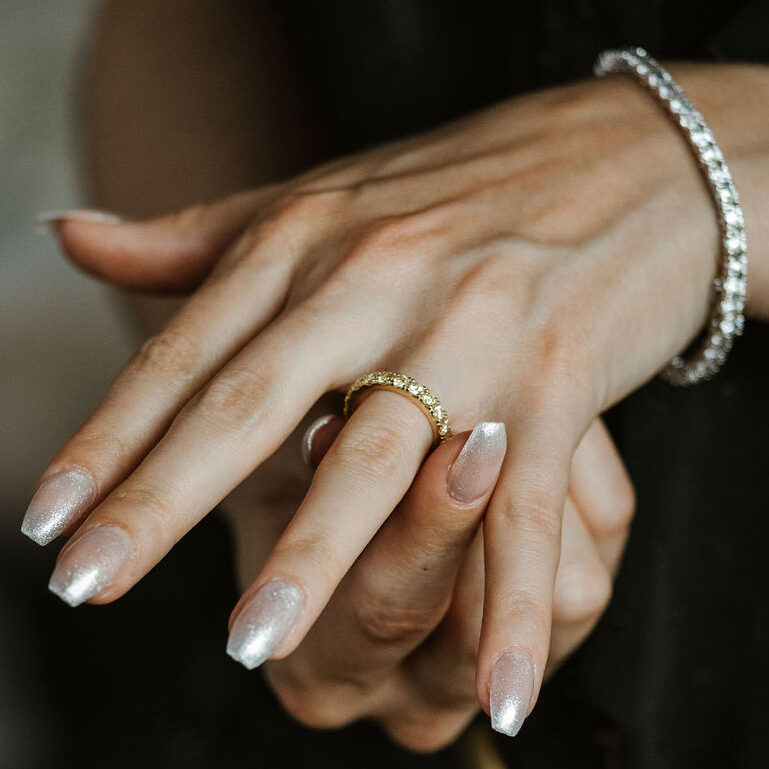Diamonds have long been considered symbols of luxury and eternal love. Their sparkle and allure capture the imagination, but what often confuses potential buyers is the concept of diamond carats. Understanding carats is essential for anyone looking to purchase a diamond, whether it be for an engagement ring or a piece of fine jewelry. This article will explore what carats are, how they affect a 다이아몬드 캐럿에 대하여 value, and how to choose the right carat weight for your needs.
What is a Carat?
A carat is a unit of weight used to measure gemstones, including diamonds. The term originates from the carob seeds that were historically used on balance scales as a means of weighing precious stones. One carat is equivalent to 200 milligrams (0.2 grams), and diamonds can be measured in fractions of a carat (e.g., 0.25 carats, 0.50 carats).
The term “carat” can sometimes be confused with “karat,” which refers to the purity of gold. It’s essential to keep these terms distinct when shopping for jewelry.
Carat Weight and Diamond Size
While carat weight is a direct measurement of a diamond’s mass, it does not always correlate directly to size. The size of a diamond is influenced not only by its weight but also by its cut and shape. For instance, a well-cut diamond can appear larger than a heavier, poorly cut stone.
Diamonds are available in various shapes—round, princess, oval, pear, and more—and different shapes will occupy space differently. A one-carat round diamond will have a different diameter than a one-carat princess cut.
How Carat Weight Affects Value
The carat weight of a diamond significantly influences its price. Generally, the larger the diamond, the more expensive it is, although this is not a strict rule. The relationship between carat weight and price is not linear; larger diamonds are much rarer than smaller ones, causing their price to increase exponentially.
For example, a 0.90-carat diamond may cost significantly less than a 1.00-carat diamond, despite the difference being only 0.10 carats. This is known as the “jump” in price that occurs at full carat weights (e.g., 1.0, 2.0, 3.0 carats).
Other Factors to Consider: The 4 Cs
When evaluating a diamond, it’s crucial to consider the “Four Cs”—carat, cut, color, and clarity. Each factor plays a vital role in determining the overall value and appearance of the diamond.
The cut of a diamond affects its brilliance and sparkle. A well-cut diamond reflects light beautifully, while a poorly cut diamond may appear dull, regardless of its carat weight.
Diamonds come in a range of colors, from colorless to light yellow or brown. Color grading is typically done on a scale from D (colorless) to Z (light yellow). A higher color grade can enhance the value of a diamond, even if the carat weight is lower.
Clarity refers to the presence of internal or external flaws, known as inclusions and blemishes, respectively. Diamonds with higher clarity grades (fewer inclusions and blemishes) are rarer and, therefore, more valuable.
Choosing the Right Carat Weight
When choosing a diamond, consider your personal preferences, budget, and the ring’s overall design. Setting a budget before focusing on carat weight is essential, as the price can increase significantly with each additional carat. It is also crucial to balance the four Cs. If you prefer a larger diamond, you may need to compromise on cut, color, or clarity to stay within your budget.
The design of the ring can impact how the diamond appears. A well-designed setting can make a smaller diamond look larger. Ultimately, choose a diamond that resonates with you. Some people prefer the look of smaller, high-quality lab created diamonds, while others may prefer larger stones with minor inclusions or color.
Conclusion
Understanding diamond carats is essential for making an informed purchase. While carat weight is a significant factor in determining a diamond’s value, it is crucial to consider the cut, color, and clarity to find the perfect diamond for your needs. Whether you’re shopping for an engagement ring or a piece of fine jewelry, knowing what to look for can help you make a choice that you’ll cherish for a lifetime.




More Stories
Ring Size Guide: How to Find Your Perfect Fit
Diamond Jewellery is the Future of Fine Jewelry
Lab Grown Diamonds: The Insider Story Behind a Revolution in the Jewelry Industry